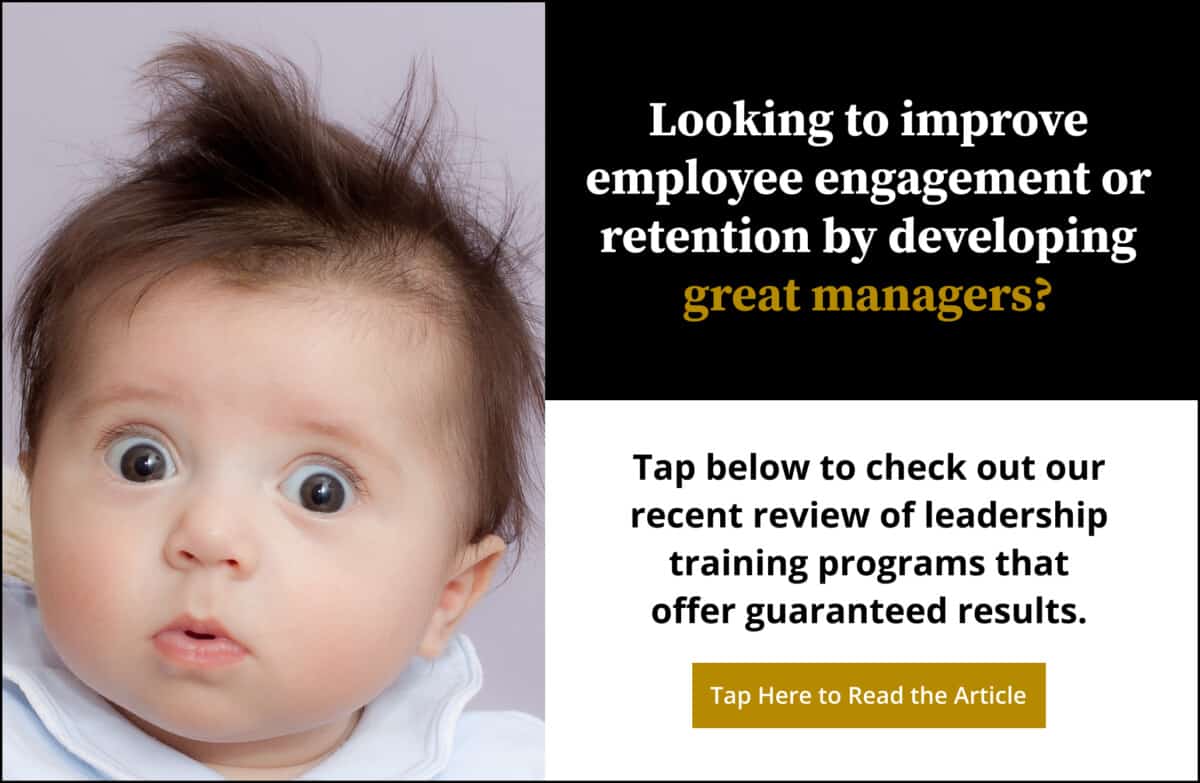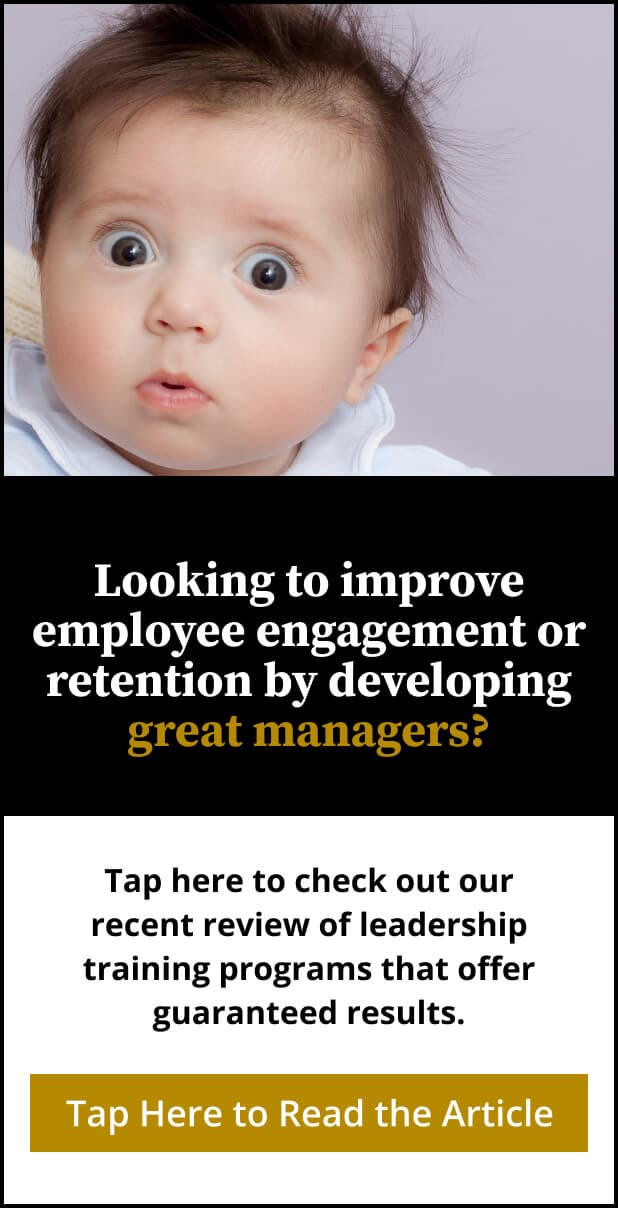Share:

Employee retention refers to an organization’s ability to retain employees. A high rate of retention is achieved by reducing employee turnover, which is the number of employees who leave a job, either voluntarily or involuntarily, during a certain period of time.
Unfortunately, increasing employee retention continues to be a challenge for many organizations, with 47% of human resource professionals citing retention/turnover as the top workforce management challenge.
Because it is more efficient and better for an organization’s bottom line to retain qualified and highly skilled employees than to train and onboard new hires, high retention is essential for long-term success.
A retention rate of 90% or higher is considered to be a good retention rate, meaning, companies that want to maintain a good retention rate should average an employee turnover rate of 10% or less.
Keeping turnover low is so important because the costs can have a devastating effect on a company’s bottom line.
Companies typically want to avoid turnover as much as possible. But retaining the right employees who are engaged in their work is even more important than simply reducing turnover.
While hitting that 90% employee retention rate can be very challenging, there are a wide array of benefits to having a high retention rate that makes it worth the effort for businesses.
Ten benefits of employee retention for businesses are increased engagement, high performance, improved productivity, strong culture, sustainable profitability, great customer service, retained institutional knowledge, better employee morale, a sense of camaraderie, and more focused management.
In this article, we’ll explore these ten benefits of employee retention and how they help businesses.


1. Engagement
Employee engagement refers to the level of dedication an employee has to their job and the organization they work for.
According to Gallup, only 32% of full- and part-time employees in the U.S. are engaged currently, while 17% are actively disengaged, an increase of one percentage point from last year. This is bad news for retention.
Retention isn’t just about keeping employees, it’s about keeping engaged employees. Fostering a work environment that is conducive to employee satisfaction is good for retention, but it’s also great for improving engagement.
Employees who stay with an organization tend to be engaged in the work they are doing. They are more productive and better at retaining customers.
When you create the ideal conditions for an employee to stay, you are positively shaping their employee experience and providing the ideal conditions for them to engage with their work.
Engaged employees will feel a sense of purpose in their work, which will motivate them to do their work well.
2. Performance
Since employee retention is strongly correlated with employee engagement, maintaining a high level of retention means you are more likely to retain highly engaged employees. Retaining highly engaged employees is essential to building high-performance teams.
In fact, one of the greatest benefits of high retention and high engagement is the way both can contribute to a culture where high performance is the norm. Engaged employees will care about their jobs and will be more invested in the success of the organization, which motivates them to perform at their best.
Engaged employees are able to connect the dots between their individual performance and the success of the company, making them more aware of how their performance directly impacts the performance of the organization as a whole.
When you retain these workers, you are ensuring that you are building teams that are committed to the mission and values of your business and dedicated to performing well to achieve success.
Another way retention is good for performance is that, the longer an employee is with an organization, the more knowledge and expertise they gain and the more they improve their skill set. These experienced employees are often your best performers.
When turnover is high, performance will suffer. High rates of turnover can lead to high rates of absenteeism, burnout, stress, and more turnover, impacting the quality of work being produced.
3. Productivity
High rates of turnover can hurt productivity in several ways.
Staff shortages can impact the overall productivity of an organization and can further impact productivity by causing more burnout, increased absenteeism, and poor employee morale.
It can take a new employee one to two years to reach the level of productivity of an existing employee. In a job where customer service is a component of the role, it can take a while for a new hire to build customer rapport.
Organizations with high retention rates typically have employees who are more engaged, and these employees tend to be more productive.
4. Organizational Culture
Company culture has come to play an increasingly important role in retention. According to a recent study, 34% of workers say culture is the main reason they would consider leaving their current role.
With so many workers now leaving their jobs for reasons other than compensation, being intentional about your company’s culture can help you improve the employee experience.
Employees help shape an organization’s culture, and they help to reinforce it. Having a team of employees with long-term cultural buy-in can help you stay intentional about culture.
According to Business Leadership Today contributors Mark S. Babbitt and S. Chris Edmonds, the loss of talented, engaged people hurts even more, when companies are not intentionally culture and values-driven.
“When highly-regarded leaders, mentors, and key contributors leave a company that hasn’t deliberately invested in their culture, the odds are good that culture, and especially that team’s subculture, will become even more accidental/incidental. Perhaps even toxic.”
Those longer-tenured workers will model core values for newly recruited candidates. However, when these employees are disengaged or leave, it can hurt retention and cause other employees to question their own loyalty to the organization.
When long-term employees leave, they take a piece of the company culture with them.
5. Profitability
Recruitment is also a costly process. It costs more to recruit, train, and onboard a new employee than it does to retain one. Because the costs associated with recruitment can be so high, it can negatively impact an organization’s profitability.
Though it can vary by role and by industry, the average cost of hiring an employee is estimated to be around $4,000, but the expense goes beyond salaries.
Recruiting, training, and competitive benefits packages add additional costs. Organizations spent more than $92 billion in 2020-2021 on training alone.
In addition to the expense of replacing an employee that leaves, the employee shortages associated with high turnover can then lead to the remaining employees experiencing burnout and the stress associated with longer hours and more job duties.
An organization’s revenue can be significantly increased when it reduces the expense associated with hiring, increases productivity, and offers better customer experiences.
When you factor in the loss of productivity, the loss of institutional knowledge, and potential hits to morale turnover can cause, it can put a real dent in profits.
6. Customer Service
Retaining talented employees positively affects customer service. More experienced employees usually provide a better customer experience and customer satisfaction, which can help an organization retain customers.
It takes a while for new hires to build rapport with customers. They may stumble when answering questions and be less skilled at problem-solving as they learn their roles, which can impact customer satisfaction.
After such an experience, a customer could post negative reviews, which can hurt the organization’s reputation. Customers will also notice if you have high turnover rates. It can be an indication to them that they will not receive consistent quality service.
Employees who are loyal to the organization will go above and beyond to protect the business’s reputation, which means always going above and beyond for customers. And customers will take note.
Strong relationships between experienced employees and customers will keep customers coming back. When customers have positive experiences with your staff, it builds brand loyalty and helps you retain those customers.
7. Institutional Knowledge
Whenever an organization loses a talented employee, they lose institutional knowledge. This can cause issues with performance, productivity, customer experience, and financial success.
In addition to the loss of institutional knowledge, an organization loses “cultural DNA” when employees leave, and there is also an “opportunity cost,” which is the potential value the employee could have brought to the organization.
When members of senior leadership depart, it can have long-term effects on succession planning and consistency within the organization. It can also lead to the departure of their teams.
This is why retaining long-tenured employees can be so beneficial for businesses. Those employees have institutional knowledge that is extremely important for the success of the organization and extremely difficult to replace.


8. Employee Morale
High turnover can deal a tremendous blow to employee morale. Maintaining high retention is one of the best ways to combat low morale.
Employees can become overworked due to the increased workloads and responsibilities that come with turnover, and this can continue until those vacated roles are filled. Even newly hired employees may experience low morale as they struggle to quickly learn their new job duties.
Low morale can lead to poor performance and an increase in absenteeism. This can hurt engagement and create a vicious cycle of even more absenteeism and turnover and even poorer performance.
Quitting can also be contagious, as we’ve seen with The Great Resignation. Employees who are witnessing the mass exodus of their peers may decide to look for greener pastures.
The good news is that retaining highly engaged employees can help to keep overall employee morale up, improving the employee experience for all team members.
9. Camaraderie
Employees who spend a long time with an organization typically forge strong bonds with their co-workers. And this is great for business!
It takes time for co-workers to build strong relationships with one another, and, when it happens, it produces great results. When employees feel a sense of connection with their co-workers, they work better, are more engaged in the work they do, and will stay with the organization longer.
According to a study by Wildgoose, 57% of employees believe that camaraderie—working with people considered friends—makes work more enjoyable, with 15% indicating they wanted a best friend at work but did not yet have one.
An Olivet Nazarene University survey reported that four out of five respondents said they work with at least one person they consider a friend.
These statistics strongly suggest that relationships play an important role in the employee experience. When employees get along with each other, it makes work much more pleasant and can facilitate collaboration and innovative thinking.
High retention creates a work environment that encourages and supports friendships amongst employees through long-term regular interaction, engagement, and high morale.
10. Focused Management
We often talk about the high costs associated with turnover. Hiring, onboarding, and training new employees can be expensive, but it isn’t just the cost of replacing the worker who has left that can be a real drain on profitability.
On top of the high cost of turnover, the time and effort managers have to spend on dealing with attrition leaves them less time to spend on current employees.
When turnover is high, managers have to focus much of their daily efforts on retention and getting the right employees to fill the vacated roles.
This can leave employees feeling ignored and unappreciated. As a result, morale can take a nosedive, paving the way for disengagement.
When retention is high, managers are able to spend more of their time tending to their teams, which is good for morale, engagement, performance, and, ultimately, retention.
Everyone Benefits
When you have high employee retention, it doesn’t just benefit the organization. It benefits the employees who work there.
By boosting engagement, retention helps employees connect more with and enjoy their work. It creates a more positive work environment where morale is high. It helps employees build rapport and establish harmonious, mutually beneficial relationships with their co-workers, which can improve their mental health.
It also helps employees grow and thrive in their roles when managers are able to spend more of their time leading than recruiting.

Matt Tenney has been working to help organizations develop leaders who improve employee engagement and performance since 2012. He is the author of three leadership books, including the groundbreaking, highly acclaimed book Inspire Greatness: How to Motivate Employees with a Simple, Repeatable, Scalable Process.
Matt’s ideas have been featured in major media outlets and his clients include numerous national associations and Fortune 500 companies.
He is often invited to deliver keynote speeches at conferences and leadership meetings, and is known for delivering valuable, actionable insights in a way that is memorable and deeply inspiring.


